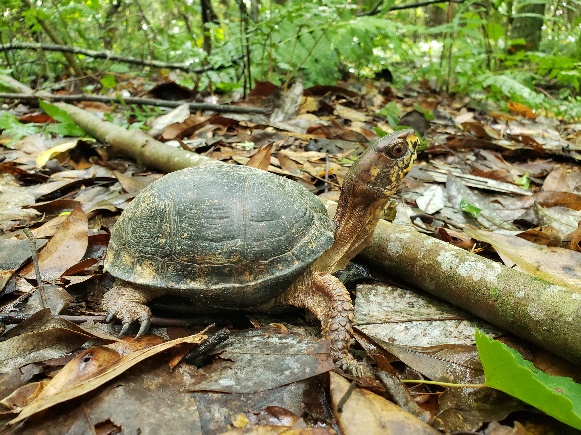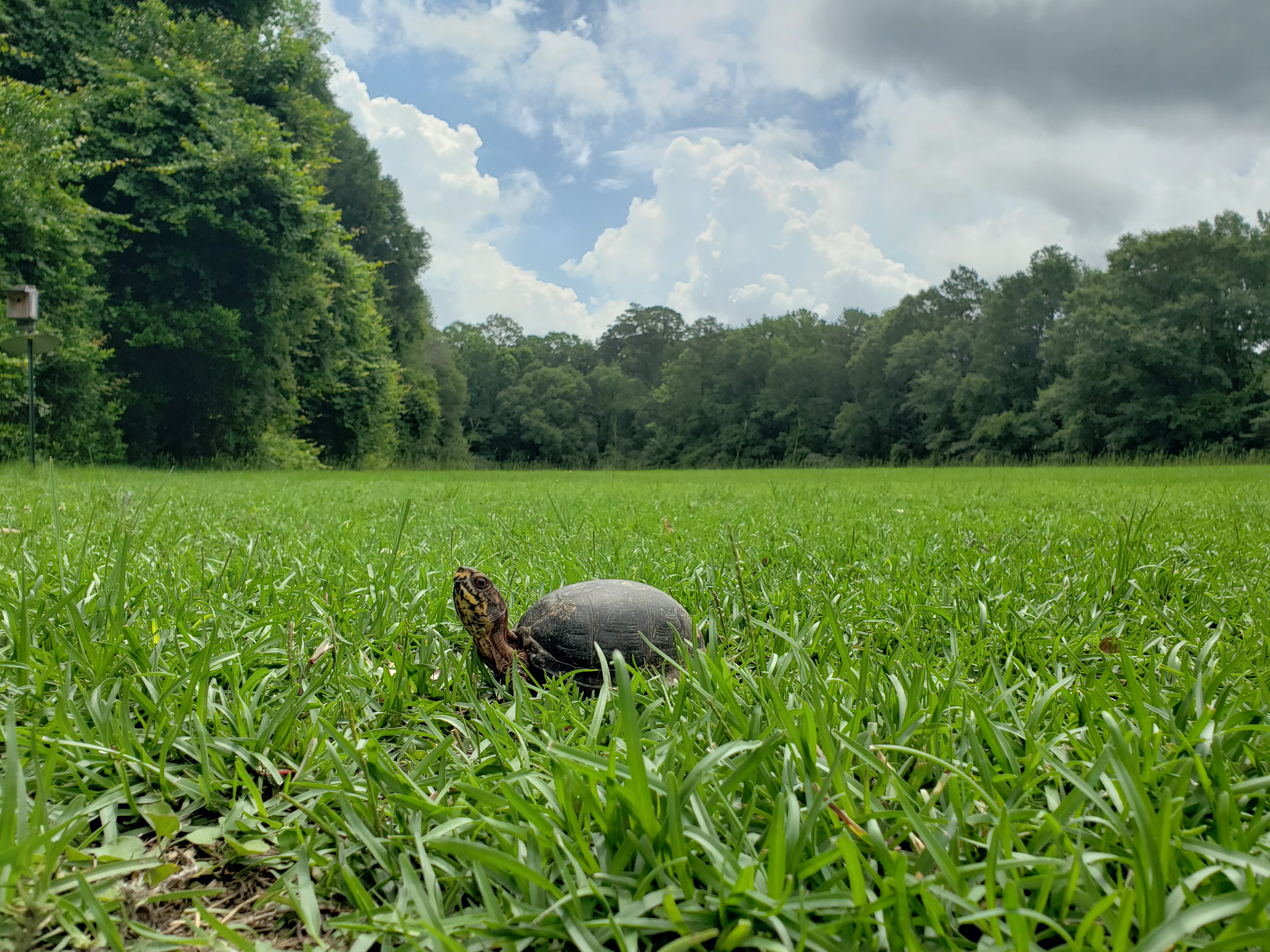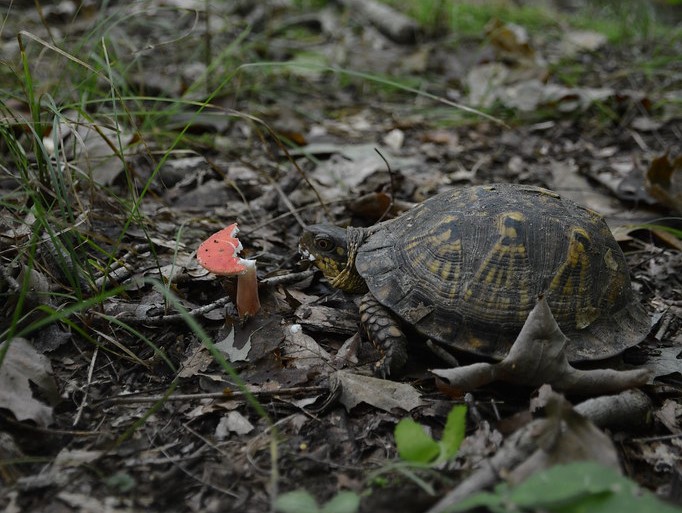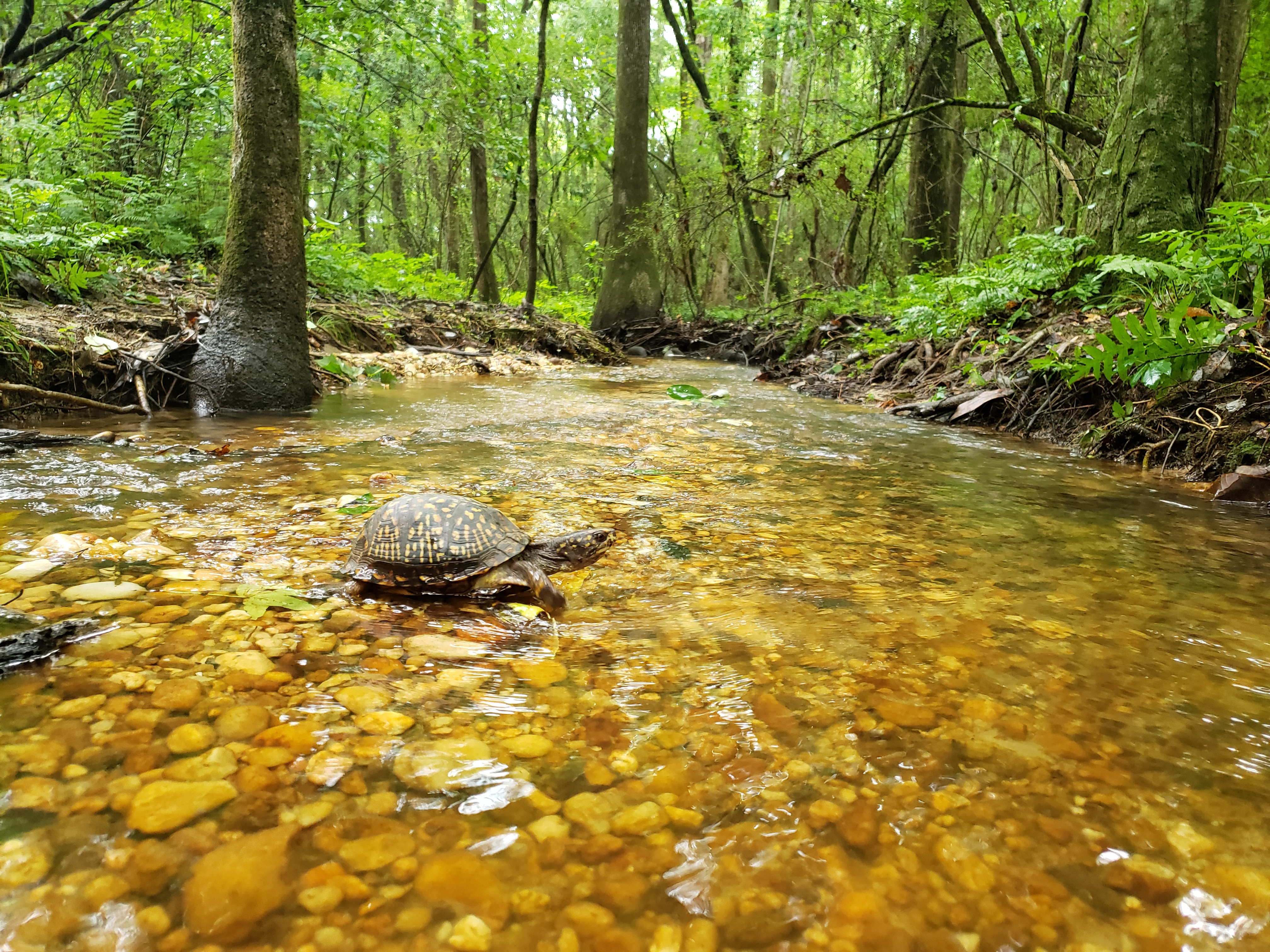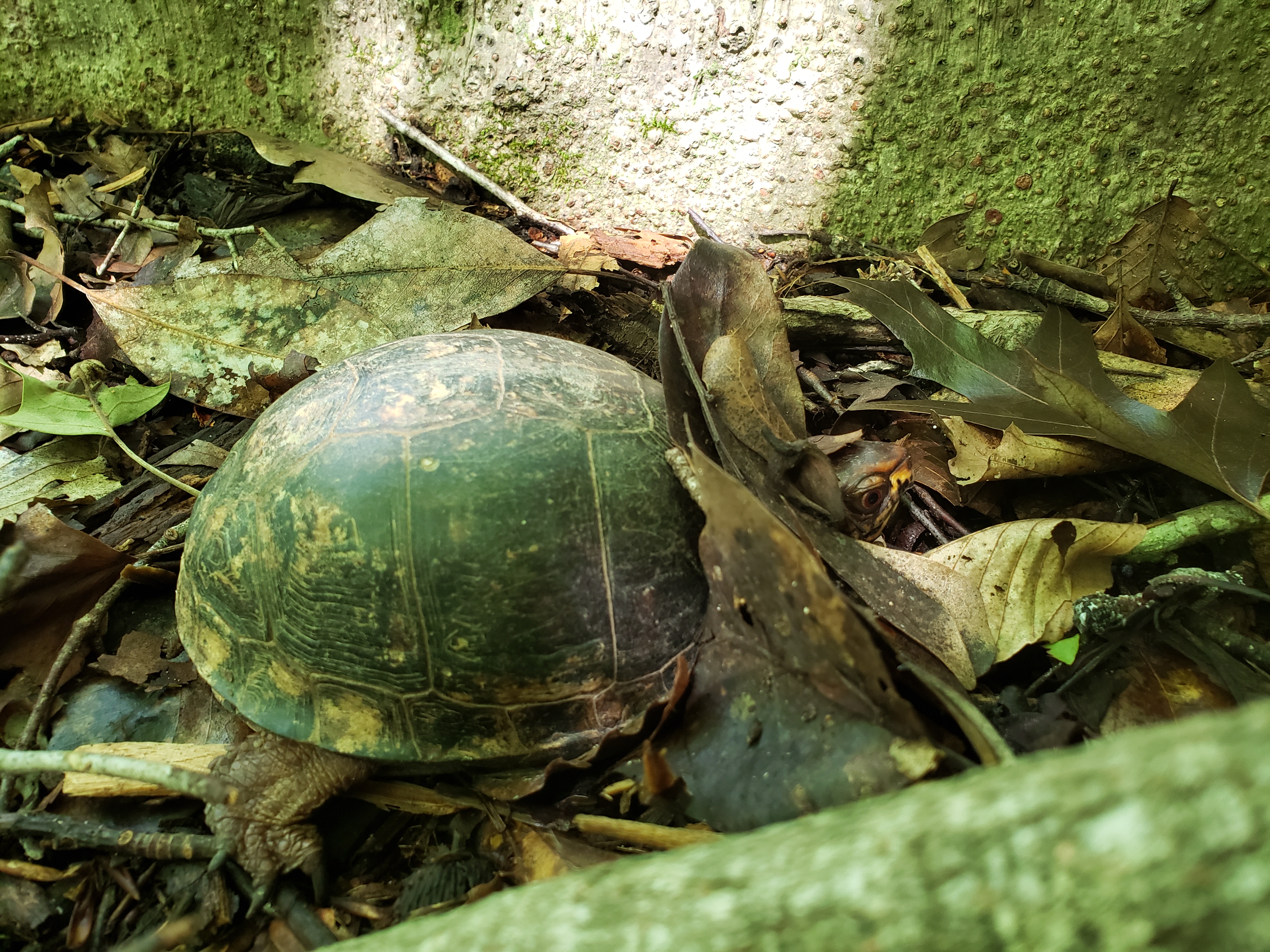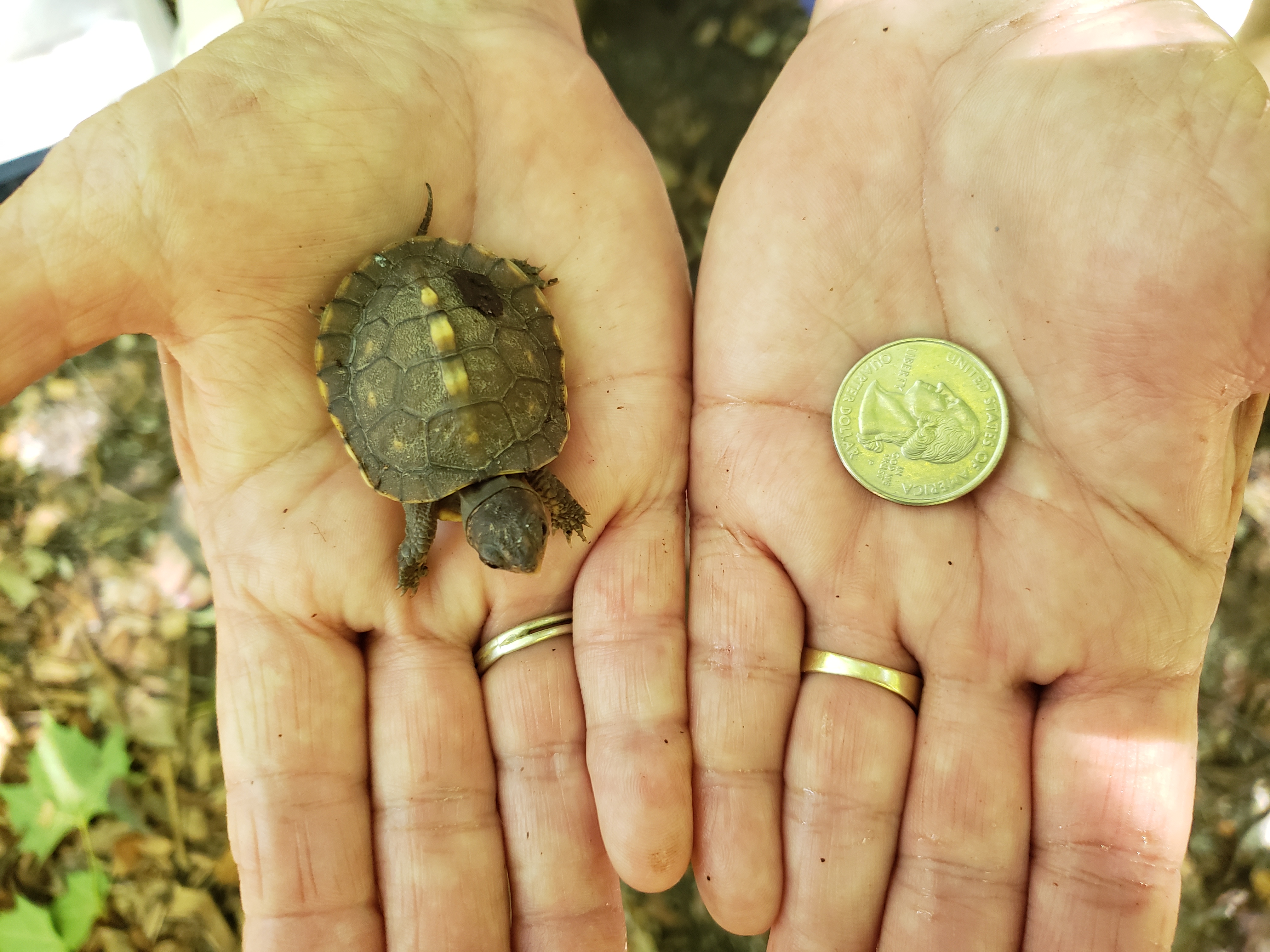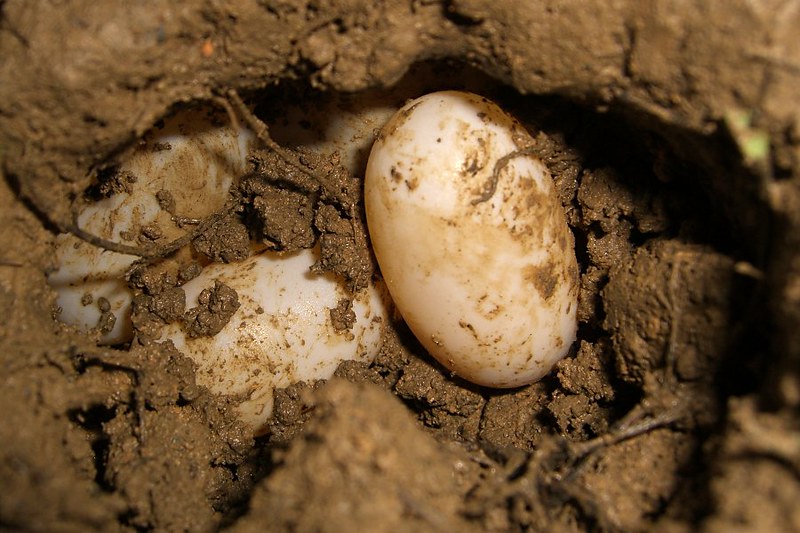Upper Grades Ecosystem Investigation: Box Turtle Habitat
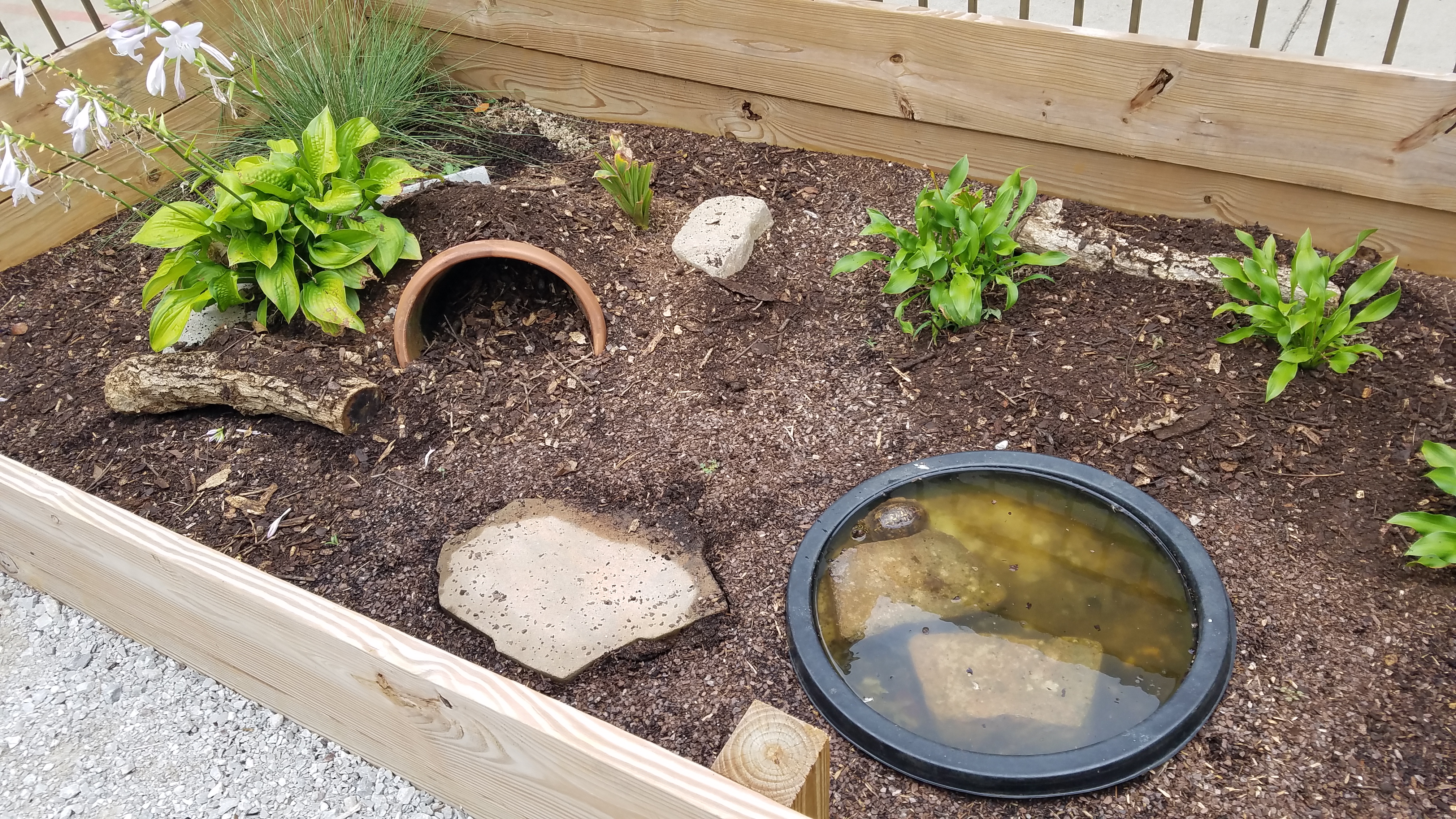
 Investigate Box Turtles and Their Habitat
Investigate Box Turtles and Their Habitat
A Box Turtle Habitat in your outdoor classroom provides provides the food, water, and shelter that box turtles need to survive including loose soil where they can burrow down underground as they brumate (hibernate) during the winter.
Click HERE to watch a video all about Eastern box turtles!

 Investigate Box Turtles and Their Habitat
Investigate Box Turtles and Their HabitatA Box Turtle Habitat in your outdoor classroom provides provides the food, water, and shelter that box turtles need to survive including loose soil where they can burrow down underground as they brumate (hibernate) during the winter.
| Click on the topics below to learn more! | |||
| Eastern Box Turtles | Box Turtle Adaptations | Habitat Needs | Interesting Facts |
Click HERE to watch a video all about Eastern box turtles!
| Eastern Box Turtles | ||||
| Turtles are reptiles (cold-blooded animals that are covered in bony plates and scales).
Turtles in Alabama
Alabama is home to 31 species of turtles. This is more species than any other state in the country! This includes some that live mostly in water and some that live on land. Generally, this difference is what separates turtles (aquatic) and tortoises (terrestrial). However, the box turtle is unique in that it is a turtle that primarily lives on land. |
Eastern Box Turtle in Habitat Tyler Burgener Click on image to enlarge it |
|||
|
Box Turtle Populations in Alabama
Eastern box turtles can be found statewide in Alabama, but populations are much smaller in some areas than others. Their population numbers are decreasing statewide due to people collecting them from the wild to keep as pets, forests and wetlands (their habitat) being converted for agriculture or development, and cars running them over as they cross the roads that cut through their habitat.There are also other types of box turtles found in Alabama – the three-toed box turtle and the Gulf Coast box turtle. Population Status
In Alabama, Eastern box turtles are protected. This means that you cannot collect them from the wild and keep them as pets. If you have box turtles at your school, it’s only because you have been given special permission from the Alabama Department of Conservation and Natural Resources and you are limited to two, non-breeding turtles. |
||||
| Box Turtle Adaptations | |
| Adaptations are those features that help an organism survive in a their habitat. Box turtles have a number of adaptations, including these listed below. |
|
|
Hinged Shell
Box turtles have a hinged plastron (bottom of shell). Because of this, they have the unique ability when threatened to retract their limbs, tail, and head into their shell and close it tightly. Many turtles have hinged shells, but box turtles are the only ones that can close theirs completely. As the shell closes, air is released, creating a hissing sound. |
Box Turtle with Shell Closed
Neil Dazet - Project Noah Click on image to enlarge it |
|
Burrowing
Box turtles are cold-blooded, meaning they cannot control their own body temperature and depend on external heat sources like the sun or a warm rock to keep their bodies warm.
In summer months, they escape midday heat under leaf litter or soil by using their specially adapted feet for digging burrows. During winter months they hibernate, burrowing as much as two feet into loose earth, mud, stream bottoms, old stump holes, or existing mammal burrows. This area where they hibernate is called their “hibernacula”, and they return to the same spot year after year. They can stay underground like this for months at a time. While underground, the turtles are protected from predators, extreme temperatures, and forest fires.
|
|
|
Box Turtle Burrowed in Leaf Litter
Tyler Burgener
Click on image to enlarge it |
|
|
Homing Instinct
Box turtles have a tremendous homing instinct. A home range is the area in which an animal lives its life from birth to death. Box turtles feed, mate, and hibernate in their home range. It is typically about the size of a football field. Their homing instinct allows them to recognize important characteristics of their home range, like locations of food and water.
If they travel outside of their home range, they will try their hardest to find their way back home. This is why it is important to help a turtle cross the road if necessary, and not to bring it home and release it where it is far from its home range. |
Tyler Burgener
Click on image to enlarge it |
Sources
 Britannica (1) Britannica (2) |
|
.
 Wildlife Tag
Wildlife Tag


